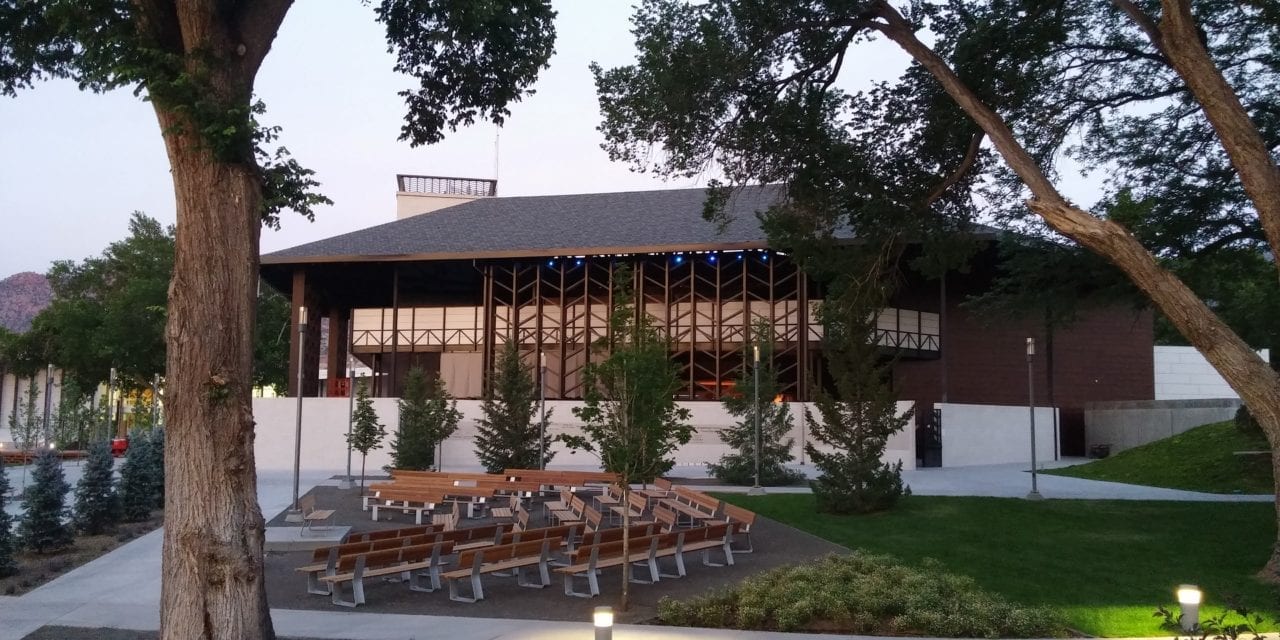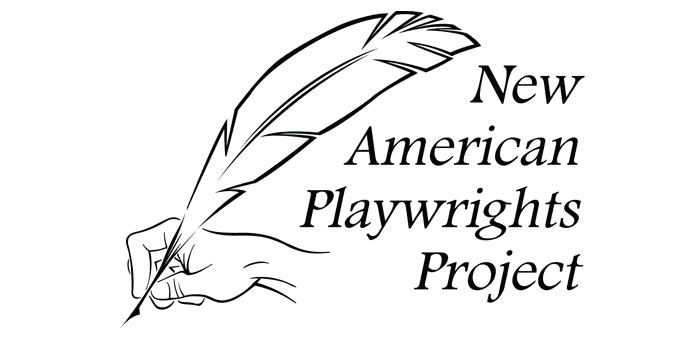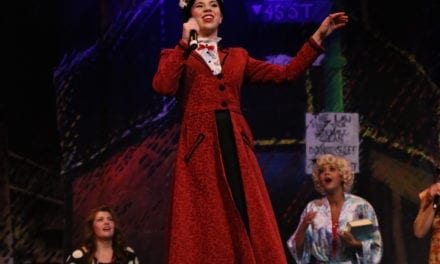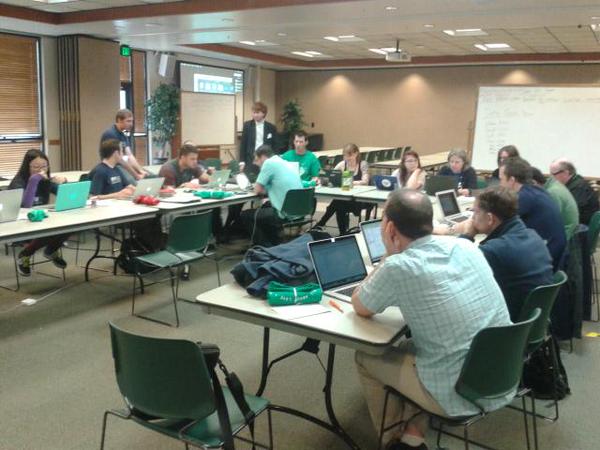CEDAR CITY — In a year full of good news for theatre companies in Utah, one story stands out: the opening of the Beverley Center for the Arts in Cedar City. As the new home of the Utah Shakespeare Center and the Southern Utah Museum of Art, “the Beverley” is an exciting development in the Festival’s history. Tours of the facilities are available, and here are a few of the things that you can see when you visit.
Engelstad Shakespeare Theatre

Engelstad Shakespeare Theatre. Photo courtesy of the Utah Shakespeare Festival.
The centerpiece of the Beverley is the new Engelstad Shakespeare Theatre, which has a capacity of 913 seats—25 more than the old Adams Theatre. Patrons already familiar with the Adams will feel at home in the new facility because its interior dimensions are almost the exact same as at the Adams. The Engelstad Shakespeare Theatre, though is more accessible for patrons with disabilities. Grabbing a bite to eat before the show or at intermission is more convenient, especially with a concession window at the upper level. I suspect that lots of patrons seated in the balcony will be grateful for that addition.
Another difference is the color scheme. The seats now are grey (no more yellow!) and—as I discovered at the theater’s premiere production—more comfortable than the old seats. There is also extensive use of stone on the perimeter, which brings a classy feel to the building’s exterior. The most important change of all, though, is the greatly increased bathroom capacity, a change that many patrons will appreciate during intermission.
Eileen and Allan Anes Studio Theatre

The Eileen and Allan Anes Studio Theatre. Photo courtesy of the Utah Shakespeare Festival.
A more intimate component of the Beverley is the Eileen and Allan Anes Studio Theatre. With a seating capacity of about 200, the Anes Theatre is a black box space that can adapt to different seating arrangements. For example, in its debut productions (Murder for Two and Julius Caesar), the seating will be arranged in “tennis court” style with the two halves of the audience facing each other with the actors performing in the middle. Additionally, the grid in the ceiling will permit equally flexible and creative options for lighting and set designers who work on shows staged there in the future.
Next to the entrance to the Anes is ticket office and all ticket windows for the Festival. This will provide better service to patrons because they won’t have to guess which office has their tickets or run from one side of the Festival grounds to the other to pick up their tickets. Immediately in front of the Anes entrance is the Simmons Family Plaza, a new place where patrons can relax and enjoy the beautiful environment of the Beverley.
Backstage Space

Backstage at the Engelstad Shakespeare Theatre. Photo by the author.
While the theaters are the most visible part of the Festival experience, they are just one component of the Beverley. There is now an extensive backstage space, which includes new office space and workshops for the Festival’s employees. Backstage at the Adams Theatre was tiny, and some actors would rest between scenes outside of the theater in full view of passers by. The Engelstad Theatre’s backstage space is much larger, which will make work easier for the actors and stagehands. I estimate that the backstage space has at least tripled, and gone are the low ceilings and cramped conditions.
The backstage space also includes workshop space for the costume and makeup staff. In fact, the Festival artists now have enough room to create all the costumes for all six summer shows at once on site. This space is also connected to both the Engelstad and the Ames, which means that actors and staff can move from one performing space to another. This will be convenient for all those people working on more than one show at a time.

Space for the Festival staff to construct costumes for six shows at once. Photo by the author.
Also backstage is the Jack and Jodi Livingood Artist Lounge, an airy space for actors and other festival employees to eat, socialize, and relax. The lounge, like many other spaces for Festival employees, has large windows and is full of natural light in the daytime. There is also a new Rehearsal and Educational hall next to the costume studio. The Shakespeare Festival has never had a space dedicated solely to rehearsal, and this will undoubtedly make their hectic rehearsal schedule more manageable.
Southern Utah Museum of Art
The Beverley isn’t just the purview of the Utah Shakespeare Festival. The other major resident is the Southern Utah Museum of Art (SUMA). The 18,000 square foot gallery can hold 300 guests, and its centerpiece holdings is the work of Utah artists Jimmie Jones, who is best known for painting the unique landscapes of southern Utah’s national parks.

Southern Utah Museum of Art. Photo courtesy of the museum.
Although its exterior—designed to evoke the image of the area’s many slot canyons—has an artistic flair, the building is a noteworthy engineering accomplishment, too. To protect the works of art, the temperature is held at a constant 70 degrees (+/- 1 degree) and 40% humidity (+/- 2%). This will allow the museum to host exhibits that other museums may loan to it in the future. The SUMA also has a conservation space for the care and upkeep of their artworks, and patrons will be able to watch professional art conservators and students at work. The SUMA also contains a community classroom, which will be an ideal setting for many of its visitors to learn about the visual arts.
Outdoor spaces

The Balcony Bards Seminar Grove. In the background are the Randall L. Jones Theatre (left) and the Southern Utah Museum of Art (right). Photo courtesy of the Utah Shakespeare Festival.
Patrons who enjoy the other offerings of the Festival will find that their favorite events have been moved to the grounds of the Beverley. For example, the literary seminars held the morning after each show are now in a new outdoor space called the Balcony Bards Seminar Grove, located between the Randall L. Jones Theatre and the Engelstad Shakespeare Theatre. The greenshow has a new stage, located just north of the Engelstad, with grass seating that can accompany up to 1,000 audience members. Combined with the Simmons Family Plaza, there are few places more enjoyable to spend some time outdoors between plays than the grounds of the Beverley Center for the Arts.





